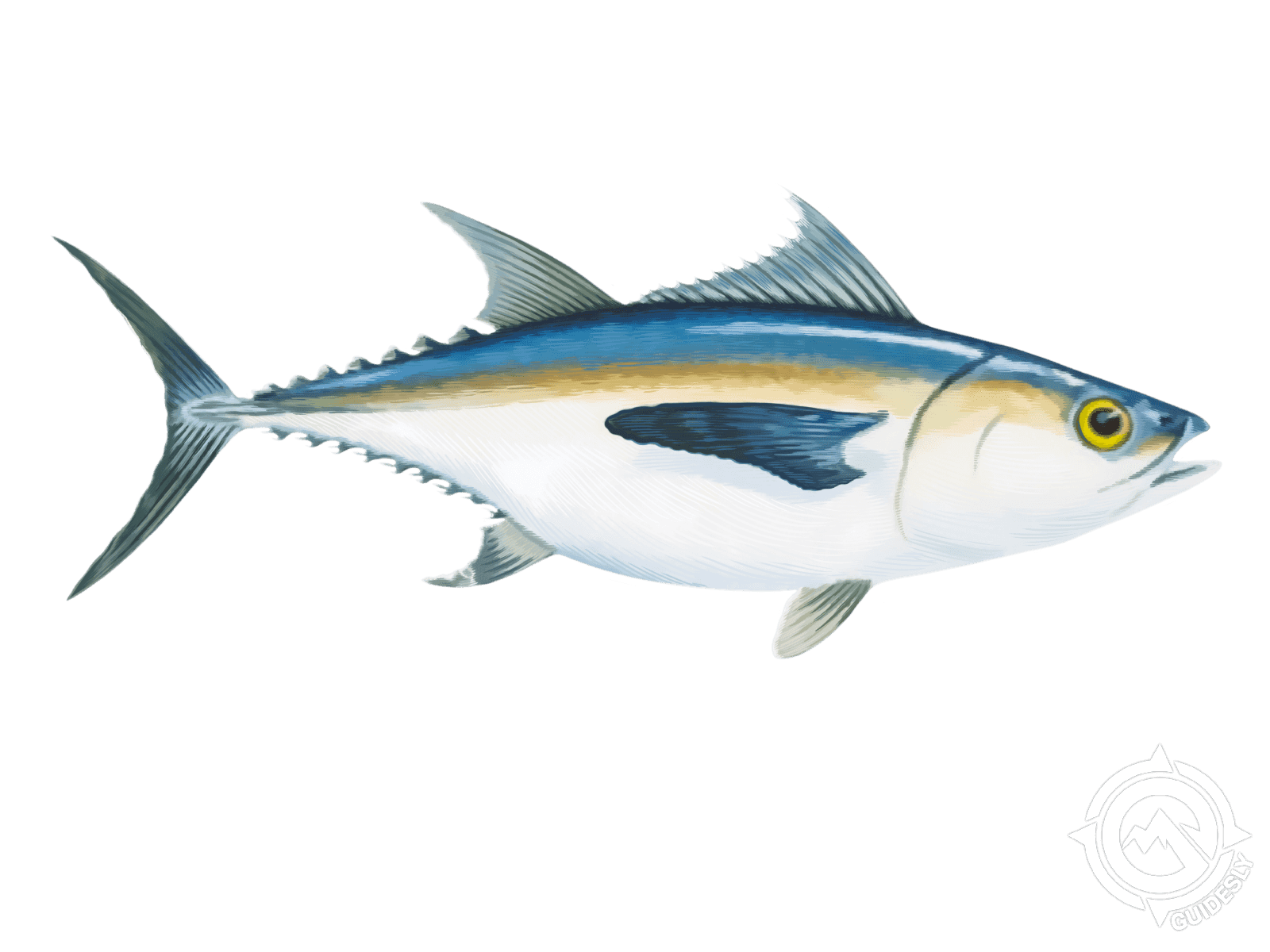Blackfin Tuna

Species Details
Thunnus Atlanticus
Scombridae
Perciformes
Offshore
2 - 20 lbs.
7" - 43"
Blackfin Tuna (Thunnus atlanticus) Fish Description
Also known as Deep-Bodied Tunny, Albacore, or Bonite Nore in French, the Blackfin Tuna is the smallest tuna in the Thunnus genus. This fish has an oval-shaped body colored black with some faded yellow near the finlets and on the sides.
Sometimes, the Blackfin Tuna’s sides can be bluish-black, whereas its belly is white. It possesses a vast, brown stripe along the portion of its eye. It has an eye-catching lateral band colored yellow or gold which fades upon its death. Its silvery abdomen has some vertical rows embedded with pale dots.
Another feature that adds to the Blackfin Tuna’s beauty are the bronze reflections on its dusky dorsal finlets.
Diet and Size
In general, Blackfin Tuna reaches up to 39 inches in length and up to 46 lb in weight. On the other hand, it falls prey to Skipjack Tuna, Blue Marlin, and Dolphinfish.
Blackfin Tuna love mesopelagic and epipelagic meals alike. They feast on squid and fish primarily, but they also like the larvae of decapods, stomatopods, amphipods, and crustaceans especially crabs and shrimps.
Interesting Facts About the Blackfin Tuna
- A five-year-old Blackfin Tuna is already considered old since this species grows fast and typically lives for a very short period of time.
- Greenpeace International added many tuna species under its seafood red list; fortunately, Blackfin Tuna were not added to it.
- The Blackfin Tuna is a migratory species that creates big schools along with Skipjack Tuna.
- Blackfin Tuna transfer to more temperate waters during summer; this species has a limited range in the US.
- Despite its wide array of food choices, Blackfin Tuna can be cannibalistic.
- The Blackfin Tuna can host many parasites including copepods, gillworms, tapeworms, and flukes.
- Its genus name Thunnus is Greek for “tuna”.
Blackfin Tuna — Fishing Techniques
The Blackfin Tuna is listed as one of the most important species for both commercial and recreational fisheries. Anglers love to catch them because they are noted for being fierce fighters. Moreover, their flesh is superbly tasty; they are usually marketed fresh then processed and canned.
Some of the most common methods used to catch them are drift fishing, and trolling. You can also try capturing them using live bait and poles. According to the most seasoned anglers, what works best in hauling Blackfin Tuna are vertical jigging and chunking. Make sure to scale down your leader and hooks; this is because Blackfin Tuna have sharp eyesight.
Apart from using #30 fluorocarbons for leaders, you should also have a 5/0 to 6/0 size circle hook. Note that you can lure Blackfin Tuna into your boat by using some live chum particularly pilchards.
Blackfin Tuna Habitat and Distribution
Most of the Blackfin Tuna population is concentrated in the Gulf of Mexico to Rio de Janeiro, the Caribbean Sea, and Martha’s Vineyard in Massachusetts. They prefer swimming in warm waters over 68 °F.
Blackfin Tuna usually occur in oceanic waters near the coastline. They usually inhabit the areas near the continental shelves. They are at their peak during autumn, winter, and spring in Florida Keys.







